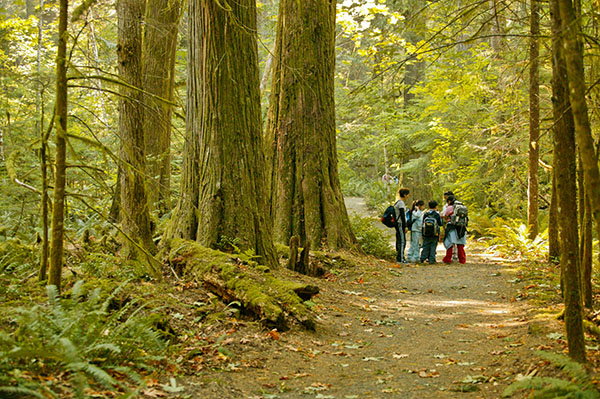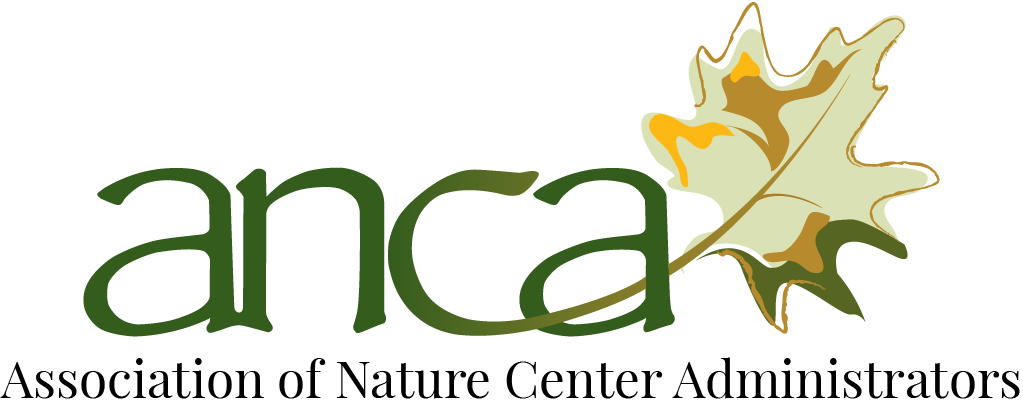by Asa Duffee, ANCA Marketing & Communications Coordinator
NATURE AND ENVIRONMENTAL LEARNING CENTERS connect inextricably to the land around them. Their missions are rooted in understanding and exploring the history, present, and future of that land, and invariably involve sharing experiences with their communities on that land.
What does it mean, then, when a nature center is situated on stolen land? After all, centers in North America are largely on land that colonizers stole from Indigenous peoples through profound violence. Those Indigenous peoples still maintain a connection to the land, too, so how can nature centers fully respect that connection?
There are no simple answers, but some nature centers are reflecting on these nuanced queries. This has led to centers adopting one small tool, a territorial or land acknowledgement, as part of their programs, events, and communications.
At their most basic, land acknowledgements recognize Indigenous peoples’ historical and ongoing connection to the land. Some are simple and brief, whereas others are more detailed and potentially personal. Typically, a host verbally makes the acknowledgement at the beginning of a meeting or event, but an acknowledgement can also be in written form as appropriate.
Land acknowledgements have historically been a part of some Indigenous cultures, and are growing in usage throughout Canada and the United States.
 A view of Denali from the junction of the Talkeetna and Susitna Rivers, the traditional land of the Dena’ina.
A view of Denali from the junction of the Talkeetna and Susitna Rivers, the traditional land of the Dena’ina.
How nature centers are using land acknowledgements
Some leaders of environmental learning centers see acknowledgements as a tool to contextualize the full story of the land they’re on. They also recognize that acknowledgements are a starting point for action, rather than a complete action by itself.
“Our territorial acknowledgment strives to recognize that throughout time people experience the land in a variety of ways. We are not the owners of the land, but we own our connection to and responsibility for the land,” says ANCA Member Catey McClary, President & CEO of Great Smoky Mountains Institute at Tremont. “We see the land acknowledgment not just as a statement to read, but an opportunity to facilitate a shared experience.”
The staff at Tremont developed an acknowledgement in the summer of 2019 and is continually developing its use in different meetings and programs. This reveals an important aspect of all land acknowledgements: there’s not just one acknowledgement that staff can memorize and recite word-for-word. The specific acknowledgement depends on the situation: a staff meeting and a week-long residential program will incorporate land acknowledgements very differently, and every person can make an individualized statement. Further, different locations require different acknowledgements, even if those locations are a few miles apart.
ANCA Organization Member North Cascades Institute now uses an acknowledgement to begin every program and institutional meeting, after initially developing its acknowledgements in 2015.
“It’s a very useful tool for grounding people in place and time,” says North Cascades Institute’s Executive Director Saul Weisberg. Rather than a rote statement, he sees it as an important part of the organization’s relationships with Indigenous communities and Tribal entities, as well as its own connection with the land.
ANCA Organization Member Denali Education Center is currently building acknowledgements to use in its programs and meetings. Executive Director Jodi Rodwell says that by recognizing Indigenous connection to the land, “we can better represent the place where we are.”
EXAMPLE: NORTH CASCADES INSTITUTE LAND ACKNOWLEDGEMENT
The human story of the North Cascades begins with the original stewards of these land and watersheds, the Indigenous Nations and their modern descendants. North Cascades Institute acknowledges that our programs take place in the ancestral homelands of Tribes, Bands, and First Nations, including most notably the Upper Skagit Indian Tribe, Sauk-Suiattle Indian Tribe, Swinomish Indian Tribal Community, Samish Indian Nation, Nooksack Tribe, Lummi Nation, Stó:lō Nation, Nlaka’pamux Nation, Colville Confederated Tribes, Syilx/Okanagan Nation.
As educators, we have a responsibility to examine our own relationship to the Land we live and teach on and to the local Indigenous communities whose traditions and identities originated in these special places. We acknowledge that the settlement period histories in this place often reflect the detrimental effects of disease, displacement, violence, migration, and loss of tenured land of Indigenous People.
We offer this acknowledgement as a first step in honoring their relationship with land we share, and a call towards further learning and action, not in place of the authentic relationships with local Indigenous communities, but rather to assist in giving them voice.
What do land acknowledgements achieve?
A common argument against land acknowledgement is that it’s a token gesture when delivered by non-Indigenous people or institutions. In other words, it’s an action that may not actually decolonize spaces or promote Indigenous rights, and might just serve to make non-Indigenous people feel like they’re taking action.
This is why Weisberg says acknowledgements are part of a bigger picture of connecting with Indigenous communities and addressing colonialism — especially in the context of nature and environmental learning centers as place-based organizations.
“It’s just the barest beginning,” he says. “The real point of this is to begin a genuine relationship.”
All the ANCA Members interviewed for this story made this point clear: a respectful land acknowledgement is based on more than one person’s words, and behind the statement should be authentic action and connection. The statement is just the tip of the iceberg, not the iceberg itself.
McClary says it was vital for Tremont to engage in dialogue to develop its acknowledgements, and did so with members of the Eastern Band of Cherokee Indians (EBCI) and the National Park Foundation among others. “Receiving feedback from EBCI and other leaders of National Parks was a critical starting point of a conversation that strives to ensure we don't create this for participants, but with participants,” she says.
 Students at the North Cascades Institute.The North Cascades Institute also reached out to Tribal members to share its acknowledgement effort, and received feedback from some. Weisberg specifically advises “that nature centers offer to compensate Indigenous people for being part of this work. There is a long history of asking people to take their valuable time to work on our issues.”
Students at the North Cascades Institute.The North Cascades Institute also reached out to Tribal members to share its acknowledgement effort, and received feedback from some. Weisberg specifically advises “that nature centers offer to compensate Indigenous people for being part of this work. There is a long history of asking people to take their valuable time to work on our issues.”
Rodwell says that in addition to building on Denali Education Center’s connections with Indigenous communities, she thinks that acknowledgements will have a direct impact on non-Indigenous program attendees. She notes that by incorporating these statements into every program, the Center can push back against a racist stereotype of Native people existing only in the past, and make clear that Native people have an ongoing connection to the land.
"We need to do this."
Having helped develop acknowledgements at North Cascades over five years ago, Weisberg says that nature centers shouldn’t delay in creating their own and incorporating them into programs and events. The Institute took time to create its acknowledgements and institutionalize them, but he thinks that it doesn’t have to be a drawn-out process.
“Right now, I think we should have done it quicker. Dealing with issues like racism and colonization, we’re never going to get it ‘right,’” Weisberg says. “It’s a lifelong journey, and we’re going to fail, but we fall forward and we get up and keep moving. You can’t fail until you get something out there, and you try it.”
Weisberg adds that he thinks nature centers have a particular responsibility to do land acknowledgements, given their connection to the land.
“We need to do this,” he says. “This is not an optional thing when we’re teaching outside with people.”
RESOURCES
These external resources share more information about Indigenous land acknowledgements and how to develop them.
A GUIDE TO INDIGENOUS LAND ACKNOWLEDGEMENT
Native Governance Center’s guide, including tips for creating a land acknowledgement.
BEYOND TERRITORIAL ACKNOWLEDGEMENTS
An âpihtawikosisân blog post reflecting on territorial acknowledgements and actions beyond them.
NATIVE LAND
A website run by Native Land Digital, including a map of territories, languages, and treaties.
WHOSE LAND
A website that maps Indigenous Nations, territories, and Indigenous communities.
HONOR NATIVE LAND: A GUIDE AND CALL TO ACKNOWLEDGEMENT
The U.S. Department of Arts and Culture’s page about land acknowledgement.
EXAMPLES OF WRITTEN LAND ACKNOWLEDGEMENTS AT NATURE CENTERS
Blandford Nature Center
Fallen Timbers Environmental Center
Islandwood (bottom of page)
North Cascades Institute
North Branch Nature Center (bottom of page)
Severson Dells Nature Center (bottom of page)
THIS ARTICLE was originally published in the Winter 2021 issue of Directions, the ANCA journal.
Want more stories like this? Scroll down to sign up for our mailing list.

